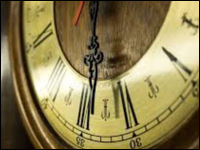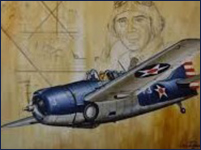Story Number One
 In the 1920s Al Capone virtually owned Chicago. He was notorious for corrupting the windy city with everything from bootlegging (illegal liquor) to prostitution to murder.
In the 1920s Al Capone virtually owned Chicago. He was notorious for corrupting the windy city with everything from bootlegging (illegal liquor) to prostitution to murder.
Capone had a lawyer nicknamed ‘Easy Eddie’. Eddie was Capone’s lawyer for a good reason – he was very good. In fact, Eddie’s skill at legal maneuvering kept Big Al out of jail for a long time.
To show his appreciation, Capone paid Eddie very well. Not only was the money big, but Eddie and his family occupied a fenced-in mansion with live-in help and all of the conveniences of the day. The estate was so large that it filled an entire Chicago city block.
Eddie lived the high life of the Chicago mob and gave little consideration to the atrocities that went on around him. But Eddie did have one soft spot – a family he loved dearly. Eddie saw to it that his young son had clothes, cars and a good education. Money was no object. And, despite his involvement with organized crime, Eddie even tried to teach him right from wrong. Eddie wanted his son to be a better man than he was. Yet with all his wealth and influence, there were two things he couldn’t give his son – a good name and a good example.
One day, Easy Eddie reached a difficult decision – he wanted to rectify the wrongs he had done. He decided he would go to the authorities and tell the truth about Al Capone. He decided he would clean up his own tarnished name and offer his son some integrity. To do this he would have to testify against The Mob which he knew would cost him dearly.
Not long after he testified against them, Easy Eddie’s life ended in a blaze of gunfire on a lonely Chicago Street. In his pockets were a rosary, a cross, a religious medallion, and a poem clipped from a magazine. The poem read:
“The clock of life is wound but once and no man has the power,
To tell just when the hands will stop, at late or early hour.
Now is the only time you own so live and love and toil with will,
And place no faith in time, for the clock may soon be still.”
Story Number Two
 World War II produced many heroes. One such man was Lieutenant Commander Butch O’Hare, a fighter pilot assigned to the aircraft carrier Lexington in the South Pacific.
World War II produced many heroes. One such man was Lieutenant Commander Butch O’Hare, a fighter pilot assigned to the aircraft carrier Lexington in the South Pacific.
One day his entire squadron was sent on a mission. After he was airborne, he looked at his fuel gauge and realized that someone had forgotten to top off his fuel tank. He would not have enough fuel to complete his mission and get back to his ship. His squadron leader told him to return to the carrier, so he reluctantly dropped out of formation and headed back to the fleet.
As he was returning to the mother-ship he saw something that turned his blood cold – a squadron of Japanese aircraft was speeding its way toward the American fleet.
His colleagues were away on a sortie, and the fleet was all but defenceless. He couldn’t reach his squadron and bring them back in time to save the fleet, nor could he warn the fleet of the approaching danger. There was only one thing to do, he must somehow divert them from the fleet.
Laying aside all thoughts of personal safety, Butch dived into the formation of Japanese planes with wing-mounted 50 calibre guns blazing, attacking one surprised enemy plane after another. He wove in and out of the now broken formation and fired at as many planes as possible until all his ammunition was used up. Undaunted, he continued the assault diving at the planes, trying to clip a wing or tail in the hope of damaging as many as possible, rendering them unfit to fly.
Finally, the exasperated Japanese squadron took off in another direction.
Deeply relieved, Butch O’Hare and his tattered fighter limped back to the carrier. Upon arrival, he relayed the events surrounding his return. The film from the gun-camera mounted on his plane told the tale and showed the extent of Butch’s daring attempt to protect his fleet. He had destroyed five enemy aircraft.
This event took place on February 20, 1942. For that action Butch became the Navy’s first Ace of WWII and the first naval aviator to win the Medal of Honor. A year later Butch was killed in aerial combat at the age of 29.
His hometown would not allow the memory of their hero to fade, and today O’Hare Airport in Chicago is named in tribute to his courage.
So, the next time you find yourself at O’Hare International Airport, give some thought to visiting Butch’s memorial displaying his statue and his Medal of Honor. It is located between Terminals 1 and 2.
So what do these two stories have to do with each other?
Butch O’Hare was Easy Eddie’s son.